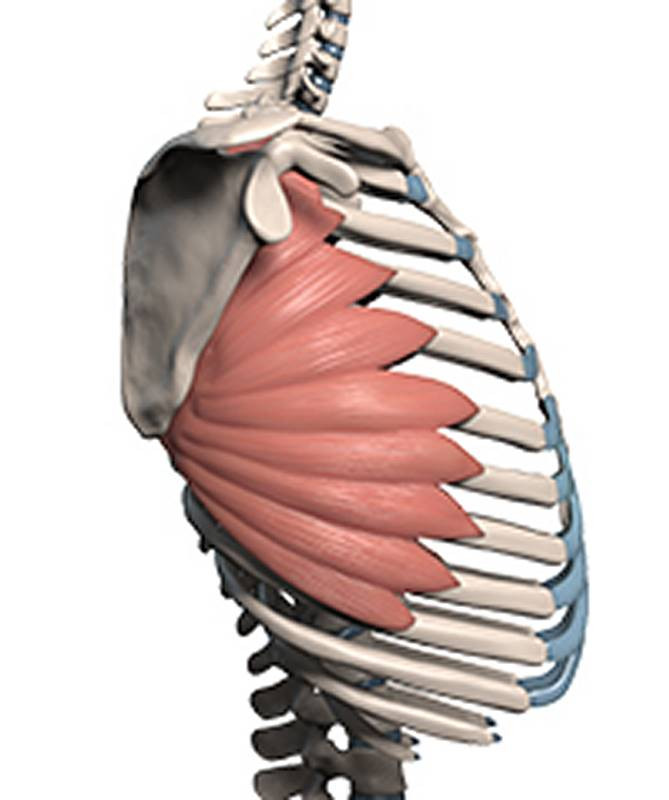Anatomy of the Human Body

- Infraspinatus
- Teres Minor
- Teres Major
- Serratus Anterior
Don’t freak out! They’re all small, simple muscles. There’s not a lot to say about each one individually, which is why we’re studying them all together. The human back can get complicated and it’s essential to understand these muscles to stay in control.
Origin and Insertion
In addition to the clues the names give you, there’s a simple pattern to the origin and insertion of these muscles: they all start on the scapula and insert around the head of the humerus. The serratus anterior is a little different but we’ll get to that in a second.

The origin of the infraspinatus takes up a large chunk of the scapula. It inserts on the greater tubercle of the humerus. The infraspinatus is a large, flat muscle that hogs the scapula.
The teres minor originates on the upper 2/3 of the lateral edge, and like its friends, it inserts on the greater tubercle. It’s an itty bitty muscle and some of it is covered by the infraspinatus and teres major.
The teres major originates just below the teres minor. It’s aimed upward and forward, going from the bottom of the scapula, under the bicep and tricep, to the front of the arm, where it inserts on the bicipital groove.
Almost done. All that’s left is our outlier muscle, the serratus anterior. It originates on the first eight or nine ribs in an arc pattern around the shoulder, and wraps around the side of the torso to insert on the inside of the scapula, along the medial ridge. You can’t see where it inserts under the scapula, but its attachment to the ribs is very important. It interlocks with the external oblique in a stair-stepping pattern. Do you remember how to locate this intersection? In a front view, you can approximate it by drawing a 45 degree line out from the pit of the neck, passing through the nipple. But in most other angles, a better approach is to follow the angle of the skeletal arch. I know the oblique attaches to the iliac crest. I’ll follow it up to the rib cage and then continue a line parallel to the skeletal arch. From there, it’s a lot easier to find the rest of the serratus and oblique.

Actions
So, all these scapula muscles look like they pull on the arm. But they do so from different angles. The shoulder joint has the most range of motion of any joint on the human body, and it needs all these nuanced muscles to make that possible. Let’s not forget about the pecs, deltoids, and lats, which also move the shoulder joint. It’s also a very shallow ball and socket joint, so these muscles help to hold the ball in the socket.

The teres major helps to adduct the arm to bring it down toward the body and extends it to bring the elbow backward. It also medially rotates the arm, while its antagonists, the teres minor and infraspinatus, laterally rotate the arm. The serratus anterior rotates the scapula for reaching upwards, and slides the scapula forward, like to punch someone.

I want to remind you about the range of motion of the shoulder joint. On average the humerus can’t abduct past about 90 degrees. To lift the arm any higher requires help from the scapula and clavicle.
Next Lesson
That’s a lot to take in, so before we move on let’s practice identifying these muscles on an actual human. To watch me get through this maze of muscles and explain my thought process of identifying them, check out the premium course. In the next lesson, we’ll study the forms of the shoulder muscles and how to draw them. I’ll give you your assignment after we study the forms.











